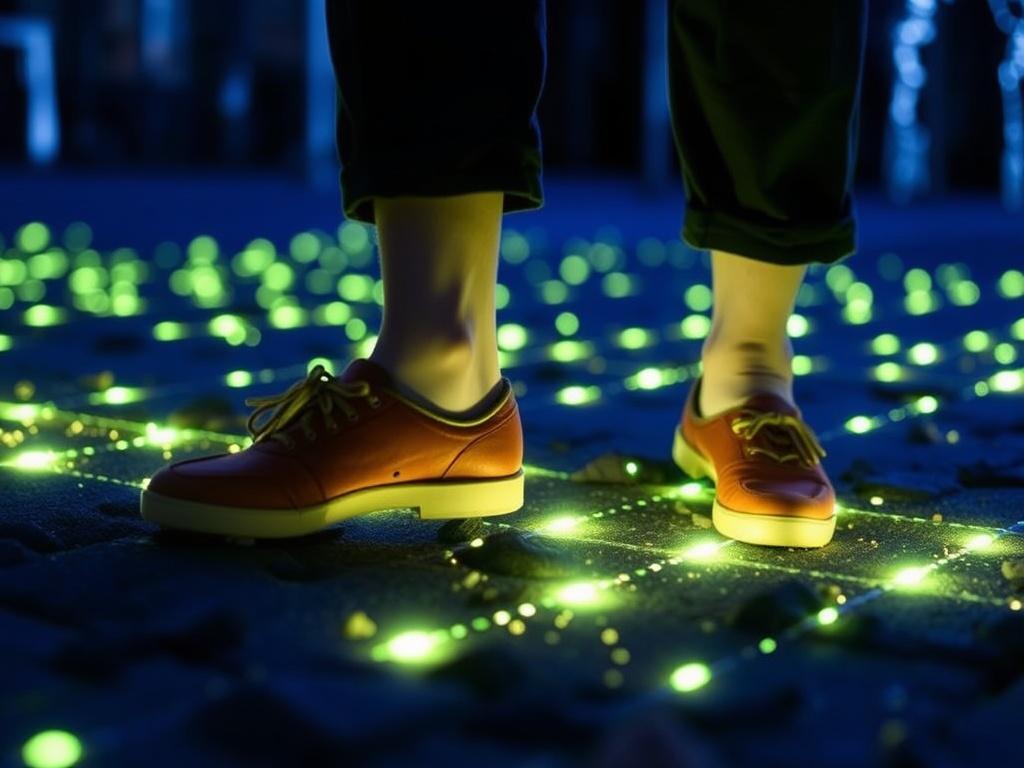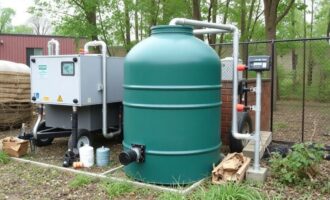- What Is Piezoelectric Energy?
- How Do Piezoelectric Materials Work?
- Types of Piezoelectric Materials
- Why Footsteps?
- Potential Applications of Footstep Energy
- How Is Piezoelectric Footstep Energy Harvested?
- Common Installation Methods
- The Numbers: Energy Potential from Footsteps
- Real-World Examples of Piezoelectric Footstep Energy Projects
- 1. The Dance Floor in London
- 2. New York City’s Transit Halls
- 3. Japan’s Piezoelectric Sidewalks
- Challenges and Limitations of Harvesting Energy From Footsteps
- 1. Low Energy Conversion Efficiency
- 2. Durability and Maintenance
- 3. Energy Storage and Management
- 4. Cost and Installation
- 5. Practical Energy Contributions
- Innovations and Future Prospects in Piezoelectric Energy Harvesting
- Advanced Materials and Nanotechnology
- Smart Floors and Integrated Systems
- Hybrid Energy Harvesting Solutions
- Potential Societal Impacts
- Comparing Piezoelectric Energy With Other Energy Harvesting Methods
- Tips for Implementing Piezoelectric Energy Harvesting from Footsteps
- Environmental Impact and Sustainability
- Piezoelectric Energy: Can We Harvest Footsteps?
Imagine walking down a bustling city street or strolling through a busy shopping mall, and with every step you take, a tiny bit of energy is captured—energy that could help power streetlights, charge devices, or even run part of the city’s electrical grid. This isn’t science fiction; it’s the promise of piezoelectric energy harvesting, a technology that converts mechanical pressure into electrical energy. One of the most exciting applications is the idea of harvesting energy from footsteps, turning our daily movements into a valuable resource. But how realistic is this concept? Can we truly rely on the energy generated from footsteps to make a meaningful impact? Let’s explore the science behind piezoelectric materials, practical implementations, challenges, and the future of this fascinating field.
What Is Piezoelectric Energy?
Piezoelectric energy refers to the electrical energy generated when certain materials are mechanically stressed or deformed. The term «piezoelectric» comes from the Greek word «piezein,» which means to press or squeeze. When pressure is applied to piezoelectric materials, they produce an electrical charge. This effect was discovered in the late 19th century and has since found various uses, from sensors and actuators in electronics to generating power.
The core concept is simple: pressure causes a shift in the electrical charges inside the material, creating a voltage difference that can be harnessed as electrical energy. The key to energy harvesting lies in capturing this voltage and storing or using it efficiently. Since footsteps constantly apply pressure to floors and surfaces, they present an intriguing potential energy source.
How Do Piezoelectric Materials Work?
Piezoelectric materials have a unique crystal structure. In their natural state, electrical charges are balanced inside the crystal. But when mechanical stress—such as a squeeze or vibration—is applied, the symmetry of the crystal lattice changes, causing a separation of charges and creating an electric field. This is known as the direct piezoelectric effect. The magnitude of the voltage produced depends on the specific material and the amount of force applied.
Common piezoelectric materials include natural crystals like quartz and technologically engineered ceramics like lead zirconate titanate (PZT). Each material has its own piezoelectric constant, indicating how effectively it converts mechanical stress into electricity.
Types of Piezoelectric Materials
| Material Type | Characteristics | Common Applications |
|---|---|---|
| Natural Crystals (Quartz) | Stable, resistant to temperature changes, moderate output | Watches, sensors, resonators |
| Ceramics (PZT, Barium Titanate) | High piezoelectric constants, easily manufactured | Actuators, energy harvesting, ultrasound |
| Polymer Films (PVDF) | Flexible, lightweight, lower output than ceramics | Wearables, flexible electronics, piezoelectric sensors |
For harvesting footsteps, many researchers and developers favor ceramics or polymer films embedded beneath flooring due to their durability and effective energy output.
Why Footsteps?
The idea of harvesting energy from footsteps is appealing because human movement is constant in urban environments. Every city, shopping mall, airport, or stadium experiences millions of footsteps daily. This continuous mechanical activity represents a largely untapped energy source. Unlike solar or wind, which depend on weather conditions, footstep energy harvesting is predictable and does not require external conditions beyond human presence.
But how much energy does a single footstep actually produce? Estimates vary, but a typical human step applies roughly 500 to 700 Newtons of force over a fraction of a second. Piezoelectric systems can convert a portion of this force into electrical energy, typically measured in millijoules per step. When multiplied by thousands or millions of steps, the total energy gathered becomes significant, though still modest compared to traditional power generation methods.
Potential Applications of Footstep Energy
- Lighting: Powering streetlights, hallway lamps, or decorative lighting in high foot traffic areas.
- Charging Stations: Providing off-grid charging for smartphones and small devices in public places.
- Sensor Networks: Supplying energy to wireless sensors used for building automation, security, or environmental monitoring.
- Public Transportation: Harvesting energy in train stations or bus stops to assist with operational needs.
These applications leverage the fact that footstep energy harvesting can supplement existing energy sources, particularly in zones with heavy pedestrian flow.
How Is Piezoelectric Footstep Energy Harvested?
Harvesting energy from footsteps involves embedding piezoelectric materials into flooring or mats that people walk on. The mechanical pressure from each foot strike generates an electric charge that is collected and converted into usable electric power. This process requires careful engineering to maximize energy capture, efficiently convert it, and store or transmit it for use.
Common Installation Methods
- Piezoelectric Floor Tiles: Specialized tiles containing piezoelectric elements installed in busy hallways or public places.
- Pressure Mats: Flexible mats that can be laid out temporarily or permanently in strategic locations.
- Embedded Systems: Integrating piezoelectric materials beneath existing flooring during renovations or new construction.
In each case, the piezoelectric elements generate an alternating current (AC) in response to mechanical pressure. This AC is typically converted to direct current (DC) through rectifiers and then stored in batteries or supercapacitors. Power management circuits regulate the voltage to ensure compatibility with the devices being powered.
The Numbers: Energy Potential from Footsteps
Determining the exact amount of energy generated per step depends on several factors: the piezoelectric material type, size, force applied, and efficiency of the harvesting system. A rough calculation helps illustrate potential output:
| Parameter | Value | Notes |
|---|---|---|
| Force per Step | 600 N | Average for an adult walking |
| Displacement | 5 mm (0.005 m) | Approximate floor compression |
| Work per Step | 3 Joules (Force × Displacement) | Mechanical energy applied |
| Conversion Efficiency | 1–5% | Typical piezoelectric energy harvesting efficiency |
| Electrical Energy Output | 0.03 – 0.15 Joules per step | Available for use after conversion |
While this energy might seem small, multiply it by thousands of footsteps per hour, and the total harvested power adds up. For example, in a busy subway station with 10,000 people passing every hour, the energy harvested could theoretically reach hundreds of joules or more, enough to power low-energy lighting or sensors.
Real-World Examples of Piezoelectric Footstep Energy Projects
Several pioneering projects around the world are already testing or implementing piezoelectric flooring to harness footstep energy. These initiatives highlight the possibilities and practical challenges involved.
1. The Dance Floor in London
In 2014, a nightclub in London installed a piezoelectric dance floor that generated electricity from the movement of dancers. The harvested energy was used to power the lighting inside the venue. Although the energy captured was relatively small compared to overall consumption, the project demonstrated the feasibility of converting foot pressure into usable electricity.
2. New York City’s Transit Halls
New York’s Metropolitan Transportation Authority partnered with researchers to install piezoelectric floor tiles in select subway stations. These floors aimed to harvest energy from commuters’ steps to power LED lighting and digital signage. While the output wasn’t sufficient to power the entire station, it showcased how energy harvesting could supplement existing power sources.
3. Japan’s Piezoelectric Sidewalks
In Japan, pietzoelectric materials have been embedded beneath sidewalks in shopping districts. The energy generated powers small displays and environmental sensors, creating a self-sustaining urban infrastructure. This has encouraged further research and development in integrating energy-harvesting materials into public infrastructure.
Challenges and Limitations of Harvesting Energy From Footsteps

Despite its appeal, harvesting energy from footsteps with piezoelectric materials comes with several challenges that limit its large-scale application. Understanding these helps provide a realistic perspective on the technology’s role in our energy future.
1. Low Energy Conversion Efficiency
Piezoelectric materials typically convert a small fraction—just a few percent—of mechanical energy into electrical energy. The remainder is lost as heat or mechanical deformation. Increasing efficiency remains a key research area but has practical limits due to material properties.
2. Durability and Maintenance
Flooring materials undergo constant stress and wear from foot traffic and environmental factors. Piezoelectric elements embedded in floors must be rugged and maintain performance over years. Repairing or replacing these materials can be costly and disruptive.
3. Energy Storage and Management
The electricity generated is often in small, intermittent bursts requiring conditioning and storage before use. Designing efficient power management circuits that operate with low input energy adds complexity and cost.
4. Cost and Installation
Installing piezoelectric materials in floors or sidewalks often involves significant upfront expenses. Retrofitting existing infrastructure can be challenging, and the return on investment may be slow considering the modest energy yields.
5. Practical Energy Contributions
The overall energy generated, while valuable for small-scale or specialized applications, cannot currently replace traditional power sources. Piezoelectric footstep energy is best viewed as a complementary or niche solution rather than a primary energy source.
Innovations and Future Prospects in Piezoelectric Energy Harvesting

The exciting realm of piezoelectric energy harvesting continues to evolve. Researchers are exploring new materials, designs, and integration methods to overcome existing limitations and enhance power output.
Advanced Materials and Nanotechnology
Innovations in nanotechnology have led to the development of piezoelectric nanomaterials and flexible films that can be woven into textiles or embedded into shoe soles. These materials promise greater durability and efficiency. For instance, carbon nanotube composites and zinc oxide nanowires offer high sensitivity and adaptability.
Smart Floors and Integrated Systems
Combining piezoelectric harvesting with smart sensors and IoT (Internet of Things) technologies enables floors to serve multiple functions—harvesting energy, monitoring foot traffic, detecting environmental changes, and enhancing security—all in real-time.
Hybrid Energy Harvesting Solutions
Rather than relying solely on piezoelectric materials, future systems might combine multiple harvesting methods, such as electromagnetic, triboelectric, and photovoltaic energy capture. These hybrid approaches maximize total energy harvested from the environment.
Potential Societal Impacts
If piezoelectric footstep energy can be scaled effectively, it could transform how we think about urban energy use, making cities more sustainable and interactive. Public awareness and support will play a role in promoting infrastructure investments that integrate energy harvesting as a natural part of urban design.
Comparing Piezoelectric Energy With Other Energy Harvesting Methods

It helps to put piezoelectric footstep energy into perspective by comparing it with other common energy harvesting approaches. This comparison illustrates where piezoelectric harvesting fits in the wider energy ecosystem.
| Energy Harvesting Method | Source | Typical Power Output | Advantages | Limitations |
|---|---|---|---|---|
| Piezoelectric (Footsteps) | Mechanical pressure from movement | Milliwatts to watts (depending on scale) | Constant in crowded areas, direct mechanical-electrical conversion | Low efficiency, durability concerns, high cost |
| Solar Photovoltaic | Sunlight | Watts to kilowatts | Renewable, reliable during day, scalable | Dependent on weather and daylight |
| Wind Energy | Air flow/wind | Kilowatts to megawatts | High power output, renewable | Variable availability, noise concerns |
| Thermoelectric | Heat differences | Microwatts to milliwatts | Works continuously if temperature gradient exists | Requires heat source, low power output |
The unique selling point of piezoelectric footstep energy is its availability in high foot traffic zones and the potential for creative integration with urban infrastructure.
Tips for Implementing Piezoelectric Energy Harvesting from Footsteps
If you’re considering piezoelectric footprint energy harvesting for a project or installation, here are some practical tips to keep in mind:
- Identify high foot traffic areas: Target places like transit stations, malls, stadiums, and busy sidewalks.
- Choose durable materials: Select piezoelectric films or ceramics rated for heavy use and environmental exposure.
- Plan for maintenance: Regular inspection and easy access for repairs will help sustain performance.
- Integrate smart systems: Connect energy harvesters with sensors and energy storage for maximum utility.
- Conduct pilot studies: Test small areas before scaling to wider installations.
- Educate users: Inform public about the benefits of piezoelectric floors to encourage positive engagement.
Environmental Impact and Sustainability
Harvesting energy from footsteps is a clean, renewable energy strategy that can reduce dependence on fossil fuels. Although the absolute energy collected might be small, the environmental footprint of piezoelectric materials is minor compared to large-scale power plants. In addition, incorporating piezoelectric floors in new buildings and renovations can contribute to green building certifications and energy efficiency goals.
This method of energy harvesting encourages innovation in sustainable urban planning, potentially reducing greenhouse gas emissions by offsetting some electricity demands in crowded public spaces. As society moves toward smarter cities, every watt of clean energy adds up.
Piezoelectric Energy: Can We Harvest Footsteps?
In summary, piezoelectric energy harvesting from footsteps is a promising technology that leverages the mechanical energy inherent to everyday human activity. While the current practical applications are mostly supplemental power sources for low-energy devices, ongoing research and development aim to boost efficiency and lower costs. Real-world pilot projects have demonstrated the concept’s viability, especially in high traffic areas where millions of footsteps occur daily. Challenges such as low energy conversion efficiency, durability, and installation cost hinder large-scale adoption, but innovations in materials science and systems integration offer hope for future advances. Ultimately, piezoelectric footstep energy is unlikely to replace conventional power sources but can serve as a valuable component of a diversified, sustainable energy portfolio. Harnessing the power beneath our feet might sound like a small idea, but it symbolizes the creative, forward-thinking approaches we need to build a greener energy future.
Как вам статья?







